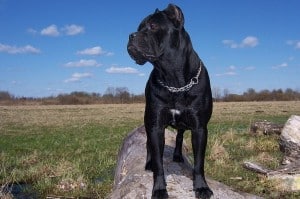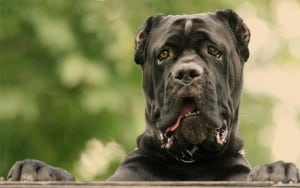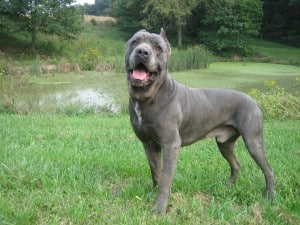
A daily walk should be sufficient to keep the Cane Corso happy. They are easily trained, and they will courageously defend property, people, and houses. The Cane Corso is an excellent working dog, used for watch, protection, police, and track dog. They are capable of protecting not only people and property, but they also do very well as livestock guardians. Some have even record them as being good herding dogs too! In addition the Cane Corso has also been used for hunting.

The American breed standard also allows for a much larger dog either having no upper weight limit or a maximum weight of 140 lbs. Another difference between the American and Italian Cane Corso is that the American version has a longer muzzle and a less marked stop than the Italian Cane Corso. Very few of the American dogs have the Italian standard of convergence between the axes of the skull and the muzzle. Instead, most of them have parallel instead of converging axes.
Another difference between the Italian Cane Corso and the American Cane Corso is that the American version is permitted to have colors never existed within the original Italian Cane Corso, coat colors include black, gray, slate, light gray, light fawn, fawn, dark fawn and “tubby” (stripes on different shades of fawn and gray). In the fawny and “tubby” Cane Corso will have a black or gray mask only on the muzzle. They also have a small white patch on their chests. Their coats are short and a bit harsh, shiny and a bit dense. It becomes thicker in the winter.

The modern lines of the Italian Cane Corso and the American Cane Corso differ. The Italian lines can be traced back for decades, while the American lines can only be traced until 1988 to a gentleman named Mr. Sottile whose Cane Corso’s are reported as being imported from Sicily. The lines of the American Cane Corso’s cannot be verified and are not as well documented as the Italian lines, causing some to question the purity of some American lines.
